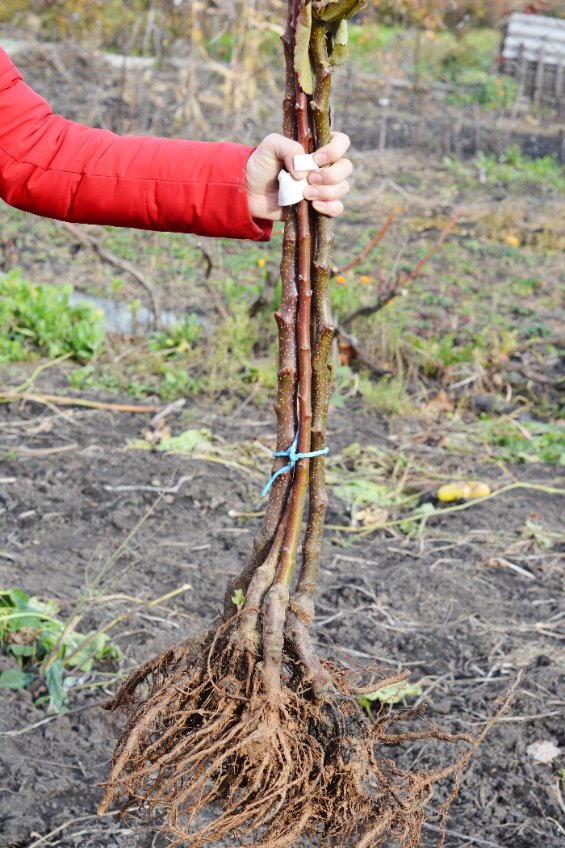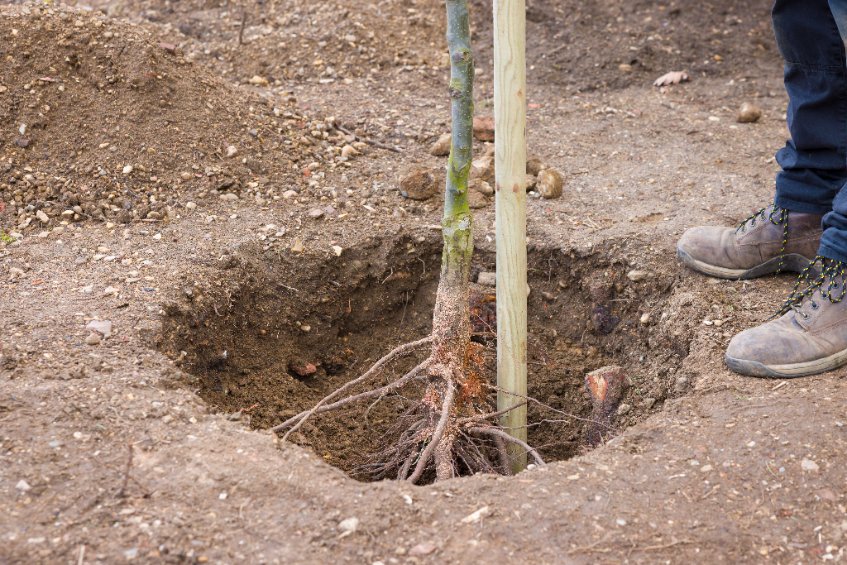Before trees, shrubs and roses were grown in containers they were grown by nurseries in the ground. They were then dug up while dormant and the soil was washed from the roots. They were then supplied in this form to the gardener. This has the disadvantage that plants were only available in the dormant season, but has the advantage that the plants are often much cheaper as you do not have to pay for the pot, the compost and the time it takes to grow plants on in a container.
Bare root plants are available from late autumn through to spring. They must be planted as soon as possible after purchase for successful growing. If you are unable for some reason to plant the shrub or tree, they can be heeled in. This is simply temporarily covering the roots of the plant or several plants by digging a hole and covering the roots with soil and watering in, until the plants can be planted in their final positions.
Planting
Choose a day when the soil is not waterlogged or frozen. Remove any packaging around the roots and soak the roots in a bucket of water for around one hour before planting.
Dig a hole twice as large as the spread of the roots and deep enough to take the roots without bending them too much. It is best to leave a cone of soil in the centre of the hole to support the stem with the roots coming down around the cone of soil. You will often be able to see a soil mark where the plant has been planted on the nursery. Try to plant again at this level. Most fruit trees and roses are grafted. Try to plant these with the graft (a swollen area at the base of the stem) around three inches (eight centimetres) above soil level.
When back filling the hole, some say it is best to improve the soil you are back filling with with a tree and shrub planting compost. Others will say that this will discourage the roots from spreading from the improved soil into the surrounding area. This is debatable but I would recommend some improvement to very poor soil. It is however recommended that you add mycorrhizal fungi to the backfill which makes the roots more tolerant of the stress caused by digging up and replanting.
Staking at planting time is recommended for larger shrubs and trees, especially if planting in a windy area. Wind rock can lead to failure of the plant to establish. Use a proper tree tie so as not to damage the bark or stem.
Hold the plant upright and backfill the hole, pressing the soil around the roots eliminating air pockets. Create a saucer of soil on the surface so that, when watering, the water reaches the roots rather than flowing away, as it will if the soil is mounded. Water the plant in well, and continue to water in dry spells, but never waterlog the roots. Mulching will help to seal in water and prevent weeds that may compete with the plant.
To view bare root plants and trees at Primrose click here
Mark Snelling
All images copyright
If you have enjoyed reading our blog post then why not fill in the form provided to allow us to send you our blog posts and newsletters by email. For all major gardening products, visit our shop from the menu above.


